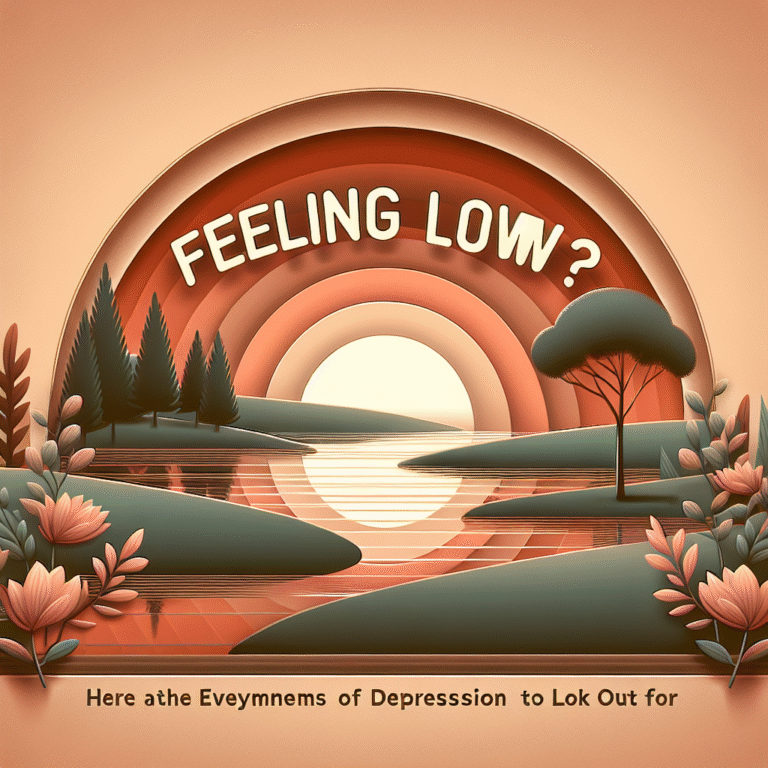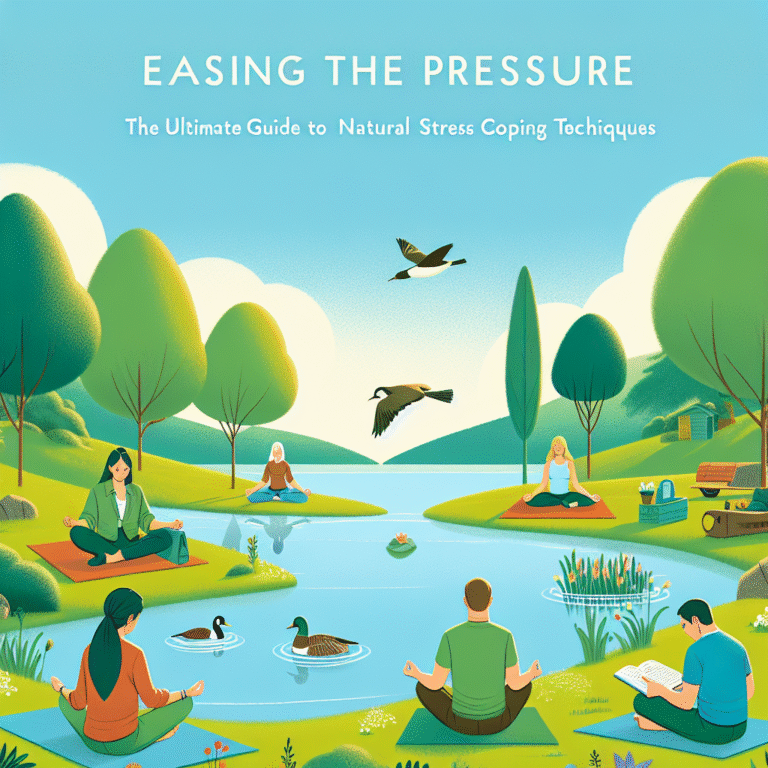
Take a Breath: Harnessing Nature’s Power to Reduce Stress Naturally
Introduction
In a world where stress seems to be an ever-looming shadow, the quest for natural remedies to alleviate this burden has grown increasingly urgent. The phrase “Take a Breath: Harnessing Nature’s Power to Reduce Stress Naturally” serves not only as a reminder but also as a call to action. As we dive into this exploration, it’s vital to understand how reconnecting with nature can serve as a soothing balm for our modern stresses.
Imagine standing in a lush forest, the gentle rustling of leaves in the wind, or sitting by a serene lake, the water shimmering under the sun. These moments aren’t just picturesque; they hold transformative potential. Let’s explore how tapping into nature’s bountiful resources can naturally reduce stress, leading to a more balanced and fulfilled life.
The Science Behind Stress and Nature
Understanding the root causes of stress is essential. Stress often arises from various factors including work pressure, personal relationships, and environmental stressors. Research indicates that chronic stress can lead to a plethora of health issues, from anxiety and depression to heart disease. In recent years, studies have begun to reveal what many have intuitively known: nature is a powerful antidote to stress.
Case Study: Nature and Stress Recovery
A landmark study conducted by the University of Kansas (2015) found that individuals who engaged with nature—through walking in parks or hiking—reported lower levels of stress compared to their urban counterparts. Participants who immersed themselves in green spaces exhibited decreased cortisol levels, the primary stress hormone. This case study provides empirical support for the idea that embracing our natural surroundings is a potent strategy in "Take a Breath: Harnessing Nature’s Power to Reduce Stress Naturally."
The Biophilia Hypothesis
The Biophilia Hypothesis, proposed by biologist E.O. Wilson, suggests that humans possess an innate affinity for the natural world. This connection explains why merely viewing images of nature can lower blood pressure and reduce stress. This underscores one of the key principles of "Take a Breath: Harnessing Nature’s Power to Reduce Stress Naturally"—our biological and emotional responses to nature can be tremendously beneficial.
Nature’s Stress-Reduction Techniques
1. Mindful Breathing Amidst Nature
Mindful breathing, especially in natural settings, creates a profound environment for reduction of stress. The rhythmic sounds of nature, such as birds chirping or rivers flowing, can help synchronize our breathing patterns, further aiding relaxation.
Practical Exercise: Find a quiet spot in nature, sit comfortably, and focus on your breath. Inhale for four counts, hold for four, and exhale for four. Repeat this for several cycles, allowing the sounds of nature to envelop you. This is a fundamental aspect of "Take a Breath: Harnessing Nature’s Power to Reduce Stress Naturally."
2. Forest Bathing
Originating in Japan, Shinrin-yoku or “forest bathing” encourages individuals to immerse themselves in the forest environment. Research has shown that forest bathing decreases cortisol levels and promotes feelings of tranquility.
Table 1: Benefits of Forest Bathing
| Benefit | Description |
|---|---|
| Reduces Cortisol Levels | Lower stress hormones in individuals |
| Improves Mood | Increases feelings of happiness and well-being |
| Enhances Immune Function | Boosts the body’s natural defenses |
| Promotes Creativity | Sparks innovative thinking and problem-solving |
3. Nature Walks
Another effective method is engaging in nature walks. Just as the body benefits from physical activity, walking in nature has been shown to not only clear the mind but also enhance physical and mental well-being.
4. Gardening: A Therapeutic Escape
Gardening offers a fantastic outlet for stress relief. Engaging with the soil, tending to plants, and witnessing growth can foster a sense of accomplishment and calm.
Real-World Example: A community garden initiative in Detroit has transformed vacant lots into green spaces. Participants report feeling more connected and less stressed, illustrating the impact of gardening as a therapeutic practice.
Embracing Outdoor Activities
Nature-based activities can also serve as practical avenues for stress relief. Whether it’s hiking, kayaking, or simply having a picnic, the exposure to natural light and fresh air can significantly enhance mood and reduce anxiety.
Case Study: Outdoor Classroom Programs
An innovative program in California, which integrates outdoor learning into the school curriculum, has resulted in remarkable academic and emotional improvements among students. The combination of physical activity and nature exposure aids in reducing behavioral issues, demonstrating a tangible link to “Take a Breath: Harnessing Nature’s Power to Reduce Stress Naturally.”
The Role of Sound
Nature’s soundtrack—birds chirping, waves crashing—has been shown to lower stress levels. The study by researchers at the University of Exeter (2012) asserts that sounds of nature can elevate mood and promote relaxation.
Practical Tip: Create a playlist of nature sounds and incorporate it into your daily routine, especially during work or meditation sessions.
Creating Your Nature-Safe Zone
What if you don’t have immediate access to nature? There are still ways to integrate nature into your life. Consider making your home environment more nature-friendly.
1. House Plants
Adding greenery to your indoor space can improve air quality and provide psychological benefits, fostering a calming atmosphere.
2. Outdoor Spaces
If you have access to a garden or terrace, use these areas to reconnect with nature. Even small spaces can be optimized for relaxation.
Conclusion
The necessity for natural stress relief mechanisms is clearer than ever. "Take a Breath: Harnessing Nature’s Power to Reduce Stress Naturally" serves as a guiding principle—a manifesto for those seeking respite from life’s overwhelming pace. Whether through mindful breathing in a forest, walking amidst tall trees, or tending to a garden—each act is a step towards a more serene existence.
In our fast-paced world, let us be reminded to pause, to take a breath, and to harness the immense power nature holds. You possess the ability to create your own sanctuary, to transform stress into tranquility, merely by embracing the natural world around you.
FAQs
1. How does nature reduce stress?
Nature reduces stress through its calming effects on the mind and body, evidenced by reduced cortisol levels and enhanced mood.
2. What are the benefits of mindful breathing in nature?
Mindful breathing in nature can help synchronize breathing patterns, reduce anxiety, and promote overall relaxation.
3. Can I experience stress relief through indoor plants?
Absolutely! Indoor plants can improve air quality and provide psychological benefits, leading to reduced stress levels.
4. How realistic is forest bathing for someone living in an urban area?
Even urban dwellers can practice forest bathing by finding local parks or green spaces, even if brief. The key is to immerse oneself in the natural environment.
5. What other activities can help reduce stress besides nature walks?
Activities such as gardening, yoga in nature, and nature photography can significantly aid in stress reduction.
By incorporating these insights and practical strategies into your life, you can begin to experience the profound benefits of “Take a Breath: Harnessing Nature’s Power to Reduce Stress Naturally.” The call to reconnect with nature is not just an invitation; it’s a transformative journey that can lead to greater health and happiness.














